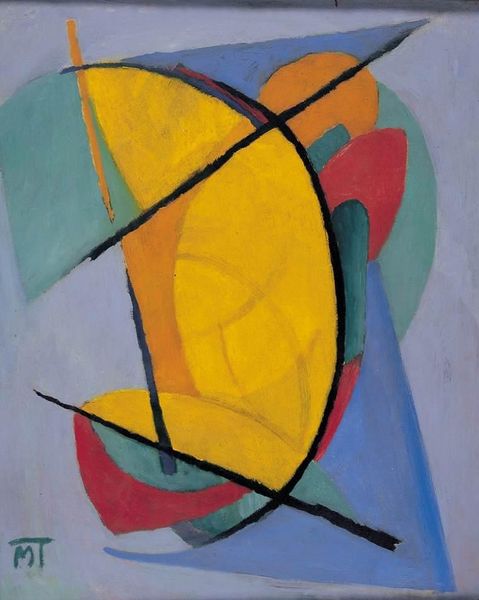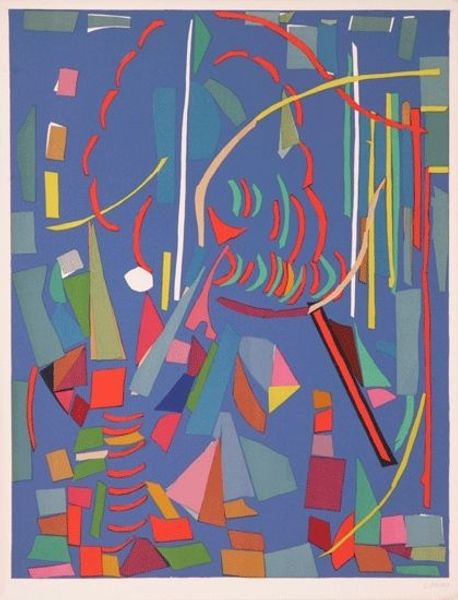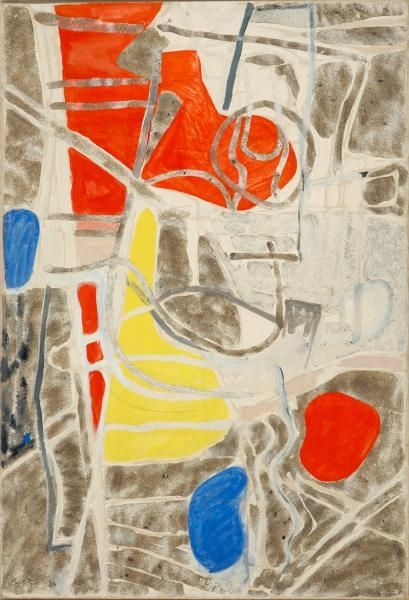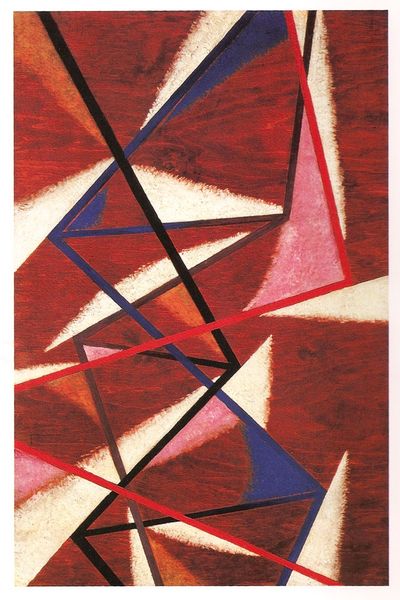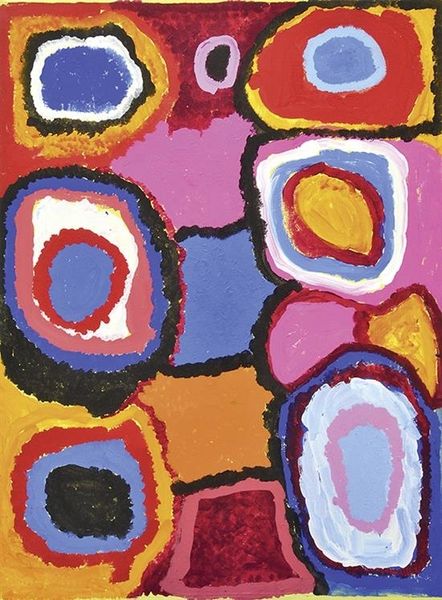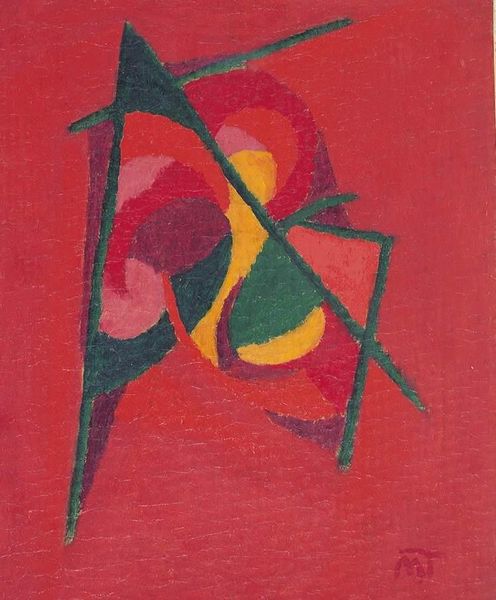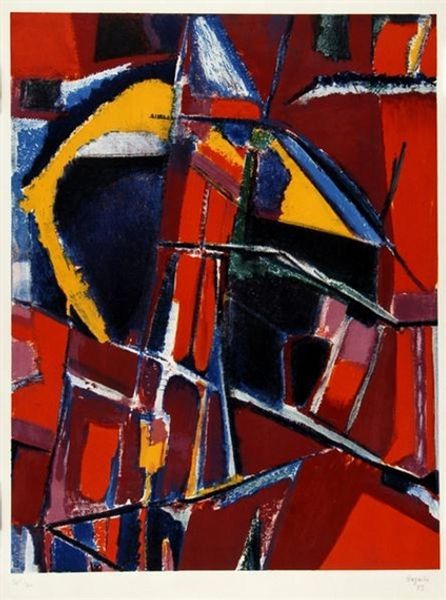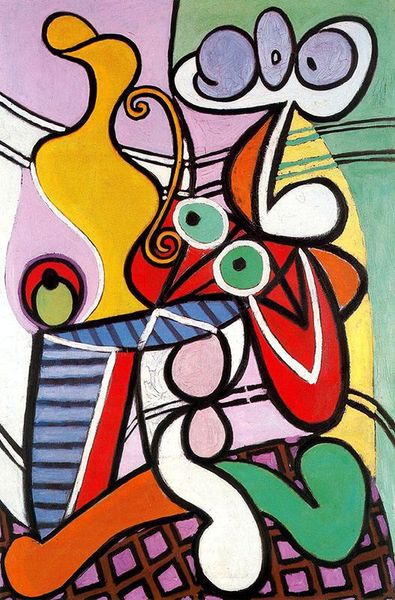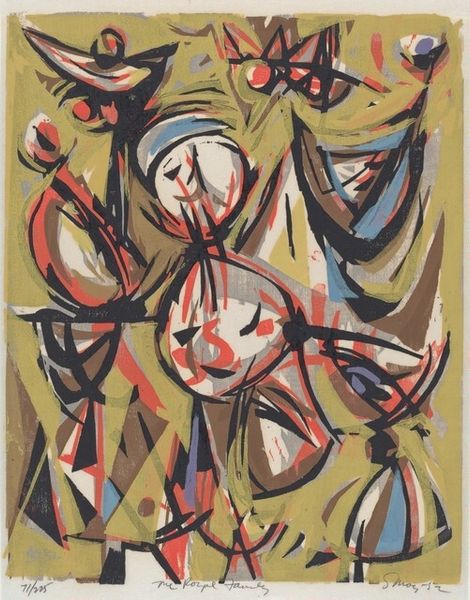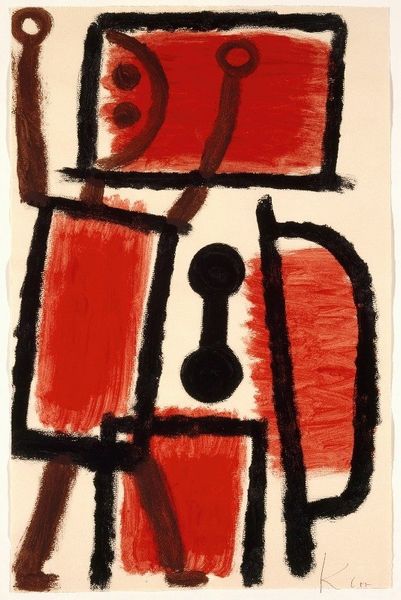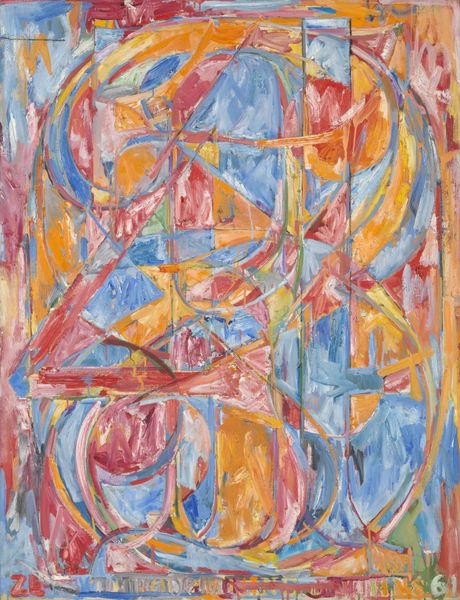
acrylic-paint
#
abstract-expressionism
#
abstract expressionism
#
acrylic-paint
#
form
#
abstraction
#
line
Copyright: Adolf Fleischmann,Fair Use
Curator: Welcome. Before us is an untitled acrylic painting from 1947 by Adolf Fleischmann. It immediately strikes me as quite dynamic. The bold use of color is hard to ignore. Editor: Yes, the visual temperature is decidedly hot. A predominantly red ground overlaid with strong, graphic lines in contrasting yellow, blue, and white—a real chromatic intensity. Curator: Absolutely. Fleischmann's exploration of form here speaks to the postwar fascination with abstract expressionism. But beneath the pure formalism, I sense deeper symbolic echoes. Editor: Such as? While I see the echoes of abstract expressionism in the boldness, what intrigues me most is the structural play between these somewhat geometric and biomorphic shapes, the interplay of figure and ground, creating a sense of almost floating forms. Curator: Perhaps the looping lines suggest cycles of life and death, and the dark void in the lower right corner reminds me of a seed waiting to sprout or, in its darker reading, existential emptiness after the devastation of WWII. I mean, a stark void is so central. Editor: A potent reading. However, one can also approach the void purely structurally: it acts as an anchor, a counterweight to the energetic movement of the lines and shapes. It consolidates the visual construction of the work. Curator: I don't discount that at all. Even those outlined shapes… reminiscent of primitive masks perhaps? Or perhaps the abstracted human form undergoing transformation after immense changes on society as a whole? These elements seem rooted in cultural archetypes. Editor: Or perhaps Fleischmann’s emphasis on flat color planes and strong contour lines echoes, and pre-dates, what would soon develop into the Pop Art movement! There's also an undeniable decorative element here—a joyful dance between line and colour that lifts the work beyond mere symbolic representation. Curator: Right—it is an invitation for us to feel and interpret as much as to analyze and categorize, revealing just how complex something that feels visually very simple can truly be. Editor: I agree; the seeming simplicity makes room for so many readings of structure and emotional register alike.
Comments
No comments
Be the first to comment and join the conversation on the ultimate creative platform.

